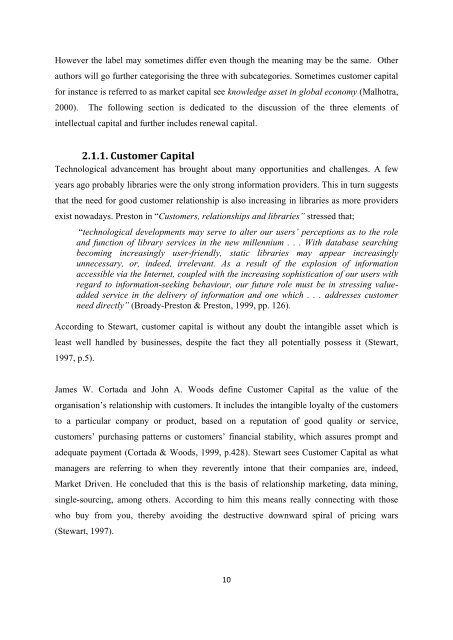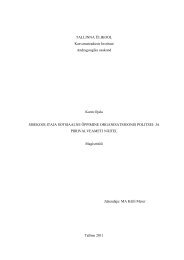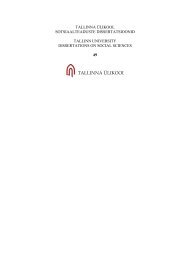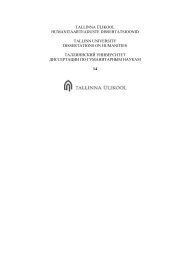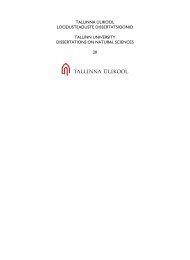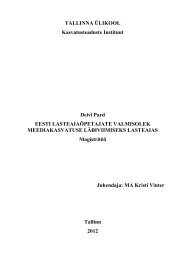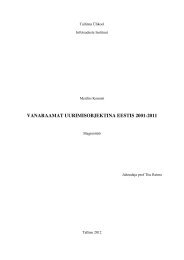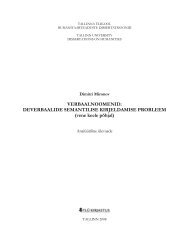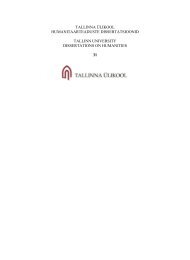Download (1157Kb) - E-Ait
Download (1157Kb) - E-Ait
Download (1157Kb) - E-Ait
You also want an ePaper? Increase the reach of your titles
YUMPU automatically turns print PDFs into web optimized ePapers that Google loves.
However the label may sometimes differ even though the meaning may be the same. Other<br />
authors will go further categorising the three with subcategories. Sometimes customer capital<br />
for instance is referred to as market capital see knowledge asset in global economy (Malhotra,<br />
2000). The following section is dedicated to the discussion of the three elements of<br />
intellectual capital and further includes renewal capital.<br />
2.1.1. Customer Capital<br />
Technological advancement has brought about many opportunities and challenges. A few<br />
years ago probably libraries were the only strong information providers. This in turn suggests<br />
that the need for good customer relationship is also increasing in libraries as more providers<br />
exist nowadays. Preston in “Customers, relationships and libraries” stressed that;<br />
“technological developments may serve to alter our users’ perceptions as to the role<br />
and function of library services in the new millennium . . . With database searching<br />
becoming increasingly user-friendly, static libraries may appear increasingly<br />
unnecessary, or, indeed, irrelevant. As a result of the explosion of information<br />
accessible via the Internet, coupled with the increasing sophistication of our users with<br />
regard to information-seeking behaviour, our future role must be in stressing valueadded<br />
service in the delivery of information and one which . . . addresses customer<br />
need directly” (Broady-Preston & Preston, 1999, pp. 126).<br />
According to Stewart, customer capital is without any doubt the intangible asset which is<br />
least well handled by businesses, despite the fact they all potentially possess it (Stewart,<br />
1997, p.5).<br />
James W. Cortada and John A. Woods define Customer Capital as the value of the<br />
organisation‟s relationship with customers. It includes the intangible loyalty of the customers<br />
to a particular company or product, based on a reputation of good quality or service,<br />
customers‟ purchasing patterns or customers‟ financial stability, which assures prompt and<br />
adequate payment (Cortada & Woods, 1999, p.428). Stewart sees Customer Capital as what<br />
managers are referring to when they reverently intone that their companies are, indeed,<br />
Market Driven. He concluded that this is the basis of relationship marketing, data mining,<br />
single-sourcing, among others. According to him this means really connecting with those<br />
who buy from you, thereby avoiding the destructive downward spiral of pricing wars<br />
(Stewart, 1997).<br />
10


